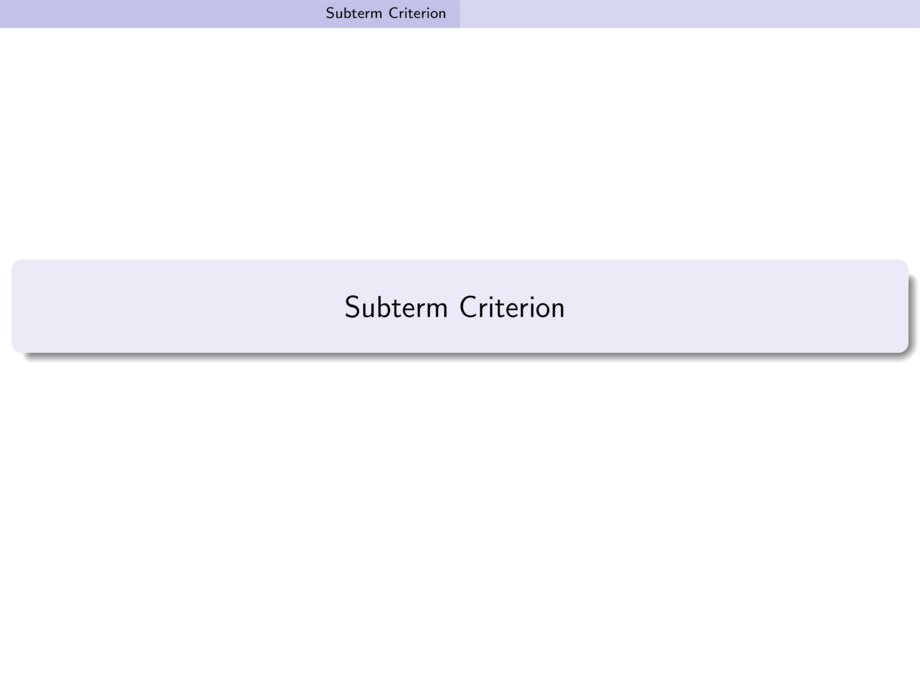



































































































271/365
\begin{frame}[t]
\frametitle{Dependency Graphs}
\vspace{-1em}
\begin{example}
\vspace{-1em}
\begin{align*}
\minus(x,0) &\to x\\
\minus(\s(x),\s(y)) &\to \minus(x,y)\\
\quot(0,\s(y)) &\to 0\\
\quot(\s(x),\s(y)) &\to \s(\quot(\minus(x,y),\s(y)))
\end{align*}
\vspace{-1em}
\pause
Dependency graph: analysis which DP-rules may follow each other
\vspace{-.5em}
\begin{center}
\begin{tikzpicture}
\begin{scope}[node distance=5mm,very thick]
\node (m) {(1) $\minus_\#(\s(x),\s(y)) \to \minus_\#(x,y)$};
\node (qm) [below=of m] {(2) $\quot_\#(\s(x),\s(y)) \to \minus_\#(x,y)$};
\node (qqm) [below=of qm] {(3) $\quot_\#(\s(x),\s(y)) \to \quot_\#(\minus(x,y),\s(y))$};
\draw[->] (qm) -- (m);
\draw[->] (qqm) -- (qm);
\draw[->] (qqm) to[out=-4,in=4,looseness=2.5] (qqm);
\draw[->] (m) to[out=-4,in=4,looseness=2.5] (m);
\end{scope}
\end{tikzpicture}
\end{center}
\vspace{-.5em}
\pause
Idea: consider only strongly connected components
$\SN(\{1\}_{\mit{top}}/R)$,
$\SN(\{3\}_{\mit{top}}/R)$.
\end{example}
\end{frame}
\section{Subterm Criterion}
\themex{Subterm Criterion}

